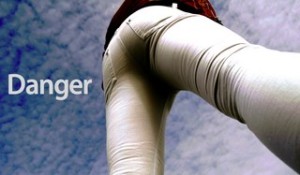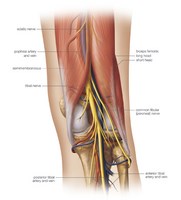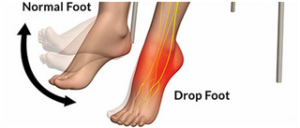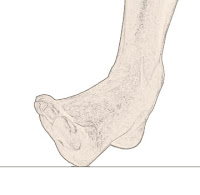 Fashion leading to funked-up function strikes again! This time skinny jeans are the culprit, and they are cutting off nerve supply to constricted hipsters. A case study published in the Journal of Neurology, Neurosurgery and Psychiatry tells of a 35-year-old Australian woman presenting to doctors with severe weakness of both ankles, which ultimately led to her being hospitalized for four days with muscle damage, swelling, and nerve blockages in her legs. Doh!
Fashion leading to funked-up function strikes again! This time skinny jeans are the culprit, and they are cutting off nerve supply to constricted hipsters. A case study published in the Journal of Neurology, Neurosurgery and Psychiatry tells of a 35-year-old Australian woman presenting to doctors with severe weakness of both ankles, which ultimately led to her being hospitalized for four days with muscle damage, swelling, and nerve blockages in her legs. Doh!
The woman reported helping a family member move, which required hours squatting while emptying cupboards. She stated that her skinny jeans felt tighter and more uncomfortable throughout the day, and when she returned home later that evening, she tripped and fell due to a bilateral foot drop. If you have never heard of foot drop, that is when nerve supply to the limb gets irritated (cut-off) enough to cause temporary paralysis. We see the same thing in long-term sciatica sufferers.
 Upon examination doctors found extreme swelling, to the degree that she could not remove the jeans on her own—they needed to be cut off! She had severe weakness affecting both legs, ankles and toes—she even had diminished ankle reflexes (no bueno). She had lost sensation at the outer (lateral) portions and tops of both her feet (really no bueno). She had classic signs of nerve irritation, which could ultimately lead to long-term damage. Damn those skinny jeans! Because nerve conduction studies showed conduction block in both common peroneal nerves between the popliteal fossa and fibular head, it is safe to say the compression occurred behind the knee.
Upon examination doctors found extreme swelling, to the degree that she could not remove the jeans on her own—they needed to be cut off! She had severe weakness affecting both legs, ankles and toes—she even had diminished ankle reflexes (no bueno). She had lost sensation at the outer (lateral) portions and tops of both her feet (really no bueno). She had classic signs of nerve irritation, which could ultimately lead to long-term damage. Damn those skinny jeans! Because nerve conduction studies showed conduction block in both common peroneal nerves between the popliteal fossa and fibular head, it is safe to say the compression occurred behind the knee.
Hospital staff treated the patient with intravenous hydration (good ol’ fashioned water, the elixir of life), and she was able to walk out of the hospital on her own after four days. Doctors were taken aback by the damage caused by skinny jeans.
“We were surprised that this patient had such severe damage to her nerves and muscles,” Dr. Thomas Kimber of the Royal Adelaide Hospital in Australia told the Associated Press.
We postulate that, in the present case, the peroneal neuropathies were the result of compression between the biceps femoris tendon and fibular head as a result of squatting. The tibial neuropathies were likely caused by compression of the nerves in the posterior compartment of the calf by oedematous muscles that had undergone ischaemic myonecrosis as a result of squatting. The wearing of ‘skinny’ jeans had likely potentiated the tibial neuropathies by causing a compartment syndrome as the lower legs swelled.
 While previous complications with skinny jeans have been primarily nerve compression at the inguinal region or groin, leading to outer thigh numbness (lateral cutaneous nerve) this case was the first reported of its kind. The doctors believe the problem is compounded by the non-stretchy nature of denim.
While previous complications with skinny jeans have been primarily nerve compression at the inguinal region or groin, leading to outer thigh numbness (lateral cutaneous nerve) this case was the first reported of its kind. The doctors believe the problem is compounded by the non-stretchy nature of denim.
I almost bought my first pair of skinny jeans last fall, but after trying them on, I just could not get around the fact that they felt…too…damn…tight. Hey, I like a firm grip in the crotch like the next guy, but nah…that was just too much jewel squeezing for my tastes. If you gotta wear the skinny jeans, then don’t don them for the big move, or any other activity that has got you squatting for dollars. Otherwise if you must squat, and you are wearing your jean leotards, better that you strip to the skivvies. Just hope they are not your tighty-whities.
















